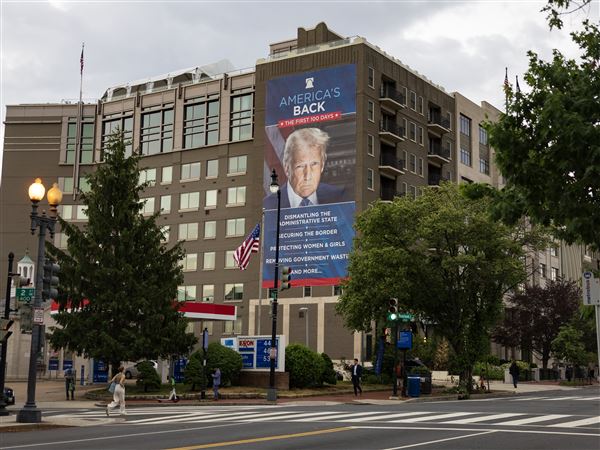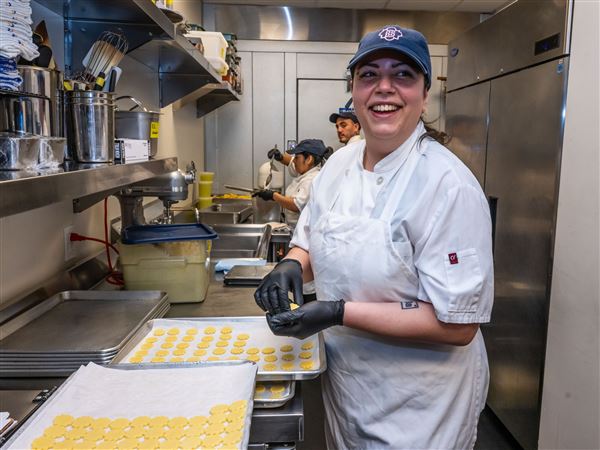Soon, now, it will be a year since my dear friend Anna died. She died in the Homestead house where she was raised. Her greatest fear was not of death but of having to leave her home and live out her life in some strange place -- a nursing home, or an assisted living home, or a personal care home.
Anna was guided in her life by her Slovak heritage, the Catholic Church and the gritty, immigrant work ethic she and her family had known from the mills and factories around Homestead in the Steel Valley. From her porch, you could see the cemetery where victims of Carnegie's Pinkertons are buried, forgotten by the hundreds of people in the cars that drive past them every day, simply unknown to many more.
When the Catholic diocese began its campaign to "un-ethnicize" its parishes, Anna was devastated. She kept going to the church her Slovak community built brick by brick as they could afford it. Buying anything (even a church) without having the money to pay for it was anathema. These houses of worship were often lovingly called the churches that pierogis built.
She continued to go to Mass even when an Irish priest appeared at the Slovak altar. That did, though, make her heart ache for an era she saw fading away.
I often wished I could follow her around with a video camera after church as she went shopping in what few stores remained on Homestead's Eighth Avenue, which once had a downtown almost as bustling as the city's.
I would have followed her to the church's Lenten Kitchen where the (mostly) older women prepared Slovak dishes to raise money for the church they so loved. She so looked forward to the fewer and fewer remaining church festivals with their games of chance, baked goods and ethnic foods. She was a vestige of a dying culture.
Anna loved this country with a fierceness. Standing at graveside for her funeral, my eyes lowered from the stinging wind and to hide my tears. I saw a small plate on the end of the casket. There was a small image of an American flag with the words "Proudly Made in the U.S.A."
Anna would have liked that, I thought. It was as though she was giving me one of her characteristic winks, and it made me smile a little in that bleak, windy hilltop cemetery.
•
Anna had never married. She blurted out one day over coffee and kolachi that the only two things she had never done in her life were ice skating and having a "serious" boyfriend.
Being with her in that tidy house was a step back in time. Luxury was not valued; neatness, thrift, devotion to faith and family were. You could look around and be transported back to the early years, minus the soot that once belched from the mills.
Now, gardens could grow plump vegetables; flowers, too. The wash could be hung outside. Anna felt blessed. I told her she was the richest person I had ever known.
What to do, though, with her treasured house of memories, a veritable time capsule of her life and time?
The task fell to her sister, a Catholic nun, the last surviving family member. Will she see in Anna's things clues to the years she'd been away, unable to come home under the old ways of the convents?
It was almost like going through an archeological dig, sifting down through old hats, holy cards from the wakes of people dead for 60 years, pictures, ration books from 1944, all neatly stored and mostly forgotten except to Anna's memory.
Sister gave me Anna's statue of St. Theresa, the saint who had been next to her bed her whole life, and one of Anna's many rosaries. A doll in a frilly dress still sat on her bed.
Anna had spent a fortune trying to win a doll at one of the church festivals in the 1970s. When she was asked why she kept trying so hard, she replied that her parents could not afford to buy her a doll during the Depression. Despite the snickers of the game operators, she at last had a doll.
•
In the paper the other day was a report that the magnificent St. Michael's Church in Homestead, Anna's beloved home, was up for sale. I am so thankful that she didn't live to see it, and that she'd been able to have her funeral service there.
In that cavernous space that day, the few remaining nuns from her sister's order sang in Slovak ... may flights of angels sing thee to thy rest, I thought.
The asking price for this magnificent building, complete with the indoor grotto we always visited, is $250,000.
Why does the loss of such a place ("the interiors are going to rot a bit" said a diocesan spokesman) make me grieve so? If they're not bought, they're demolished.
Because I am still blessed to remember a time when these places mattered. "The church is not a building" we are told, it is the congregation. But why is there not more effort to honor these places and the spirit of those who gave them to us?
First Published: June 9, 2012, 4:00 a.m.
Updated: June 9, 2012, 1:22 p.m.














